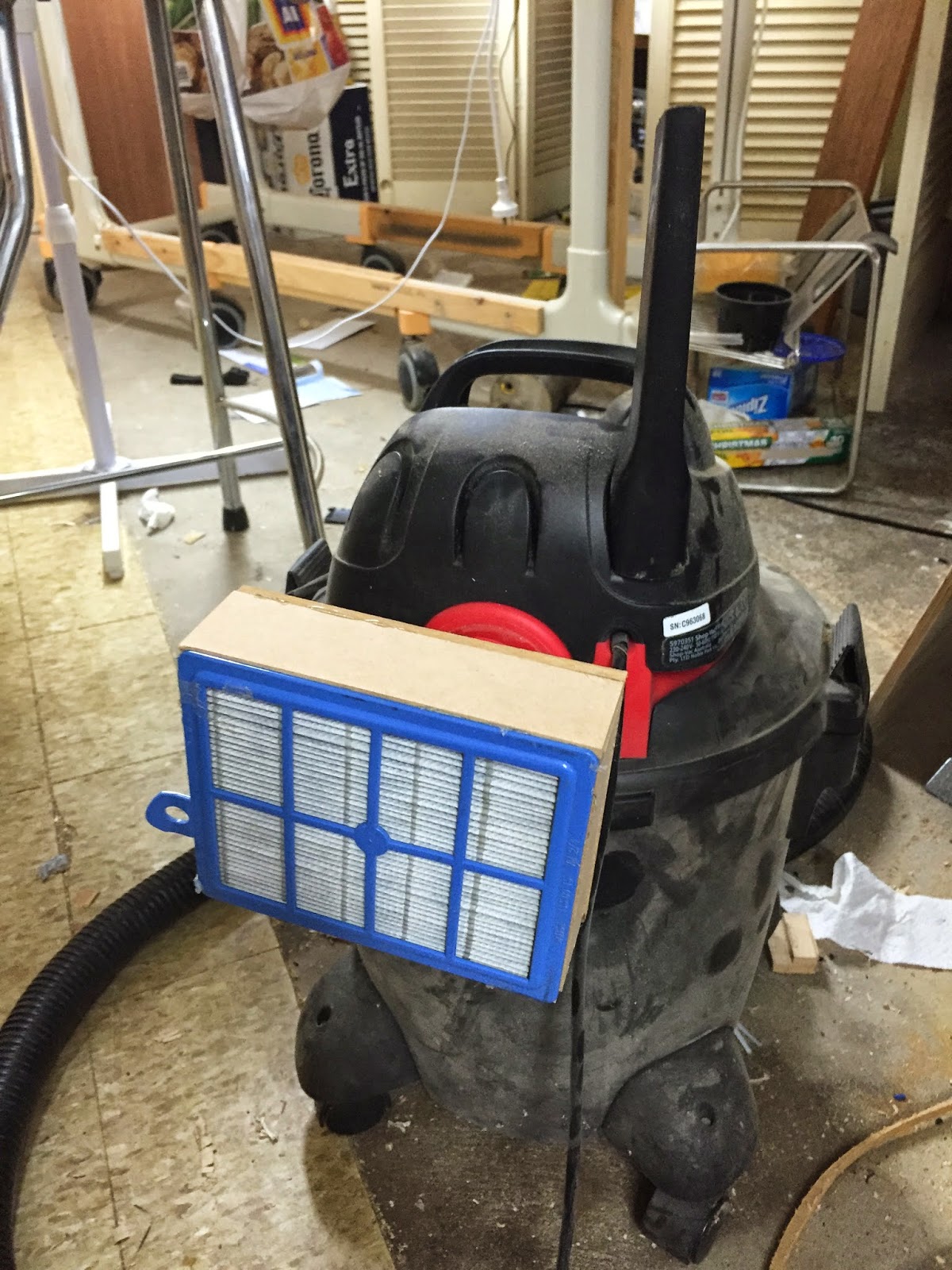I love cyclonic vacuums. A lot. I've had Dyson cyclone for about 4 years now and recently i pulled the wash every 6 months HEPA filter out for the first time and it was perfectly clean. I was shocked, that's efficient cyclone! That vacuum has been used and abused over its life from sucking up superfine MDF and plaster dust to dirt, screws and leaves and it has not failed yet.
I've (and possibly my neighbours) of having to take the filter out of the shop vac every couple of empties to take it out into the yard and blowing it out with compressed air. Usually creating giant dust clouds.
So I decided to add a cyclone to my shop vac. The cheapest available solution that I could find was a Dust deputy which was $85 just for the cyclone, no bucket or hoses were included. The full kit was $179. Considering i only paid $30 for my shop vac that seemed a little pricey. The other day on eBay i noticed a Chinese clone of the dust deputy for $50. Still more then I wanted to pay, but I really wanted to stop having to clean that damn filter, so I bought it. I have made one before but it would be really fiddly to make one that small.
I started with making a little trolley to hold it all and used the wheels from the shop vac to make it mobile. Added a handle to make it easy to move around. The cyclone is bolted to a sheet of 12 mm ply and held down to a 30l bucket with bungee straps with some weather strip added between the ply and the bucket to achieve a good seal. Lastly the vac was screwed down to the base, I don't plan on having to empty the vac very often so I don't mind undoing a couple of screws to do that.
I tested it buy sucking up about 10l of stuff that I had emptied from the shop vac. Opened the shop vac and it was perfectly clean! Yay!
The Finished result.
Till next time
Al
Tuesday, December 9, 2014
Monday, December 8, 2014
Pallet Pal
With the addition of a ute added to Al's shed fleet, i'm now able to transportate large stuff around, in particular pallets.
Pallets are great. They're free and mostly made from hardwood. Pallets are designed to never come aapart toensure the longest lifespan. This is achieved by using spiral nails, sometimes glue coated.
These nails are designed by satan himself. They are very very difficult to remove with a hammer, you really need quite a lot of mechanical advantage to remove these. It also makes prying the boards off a pallet without damaging the pallet very changeling. There are various methods around the internet of breaking down pallets, but all seem to be more difficult than is necessary and either result in a low yield or cut off nails which are difficult to remove.
Luckily Izzy Swan over at think wood works has developed a cracker tool to solve this problem.
The pallet pal.
Check out it being built and in action here:
https://www.youtube.com/watch?v=Kpcur7RTDVU
So i decided to make one.
Because it straddles both side of the board being removed and having a long handle it really makes short work of breaking down pallets.
In the three pallets i've broken down i've only cracked one board.
If you have the urge to break down pallets i strongly suggest you to consider making one of these. Its quick to make and quite cheap even if you have to buy the plywood and threaded rod.
Till next time.
Al
Wednesday, December 3, 2014
Shop vac get a HEPA filter
The air filter on my $30 shop vac sucks, not in a good way. When i suck up super fine dust it can be seen coming out the exhaust port back into the air. Most unsatisfactory. I've been thinking about upgrading it to a HEPA filter for a while, but they are a little pricey. Recently i got a new dust extraction system which meant i decommissioned by DIY cyclone one i had made earlier. When i pulled apart one of the vacs that was in that system i discovered it had a HEPA filter.
HEPA (High-efficiency particulate air) filters remove at least 99.97% of airborne articles 0.3 micrometers (µm) in diameter or larger.
Next i made a quick box to encase the filter using 3mm MDF and hot glue and cut a hole on the back before i attached it. (Baking paper works great to stop hot from setting where it shouldn't)
I had to be careful to not get glue on the pipe, as that hole would serve as the maintenance port for cleaning.
HEPA (High-efficiency particulate air) filters remove at least 99.97% of airborne articles 0.3 micrometers (µm) in diameter or larger.
I started with figuring out how to adapt the rectangle filter to the round exhaust port. I had a 2.5" to 4" adaptor that would be a good start but the exhaust port was only 2" in diameter. So I cut it in half and removed the excess material to form a 2" pipe and plastic welded it back together.
I had to be careful to not get glue on the pipe, as that hole would serve as the maintenance port for cleaning.
Wham bam thankyou mam, shop vac now has a HEPA filter.
Till next time.
Al
Subscribe to:
Comments (Atom)







